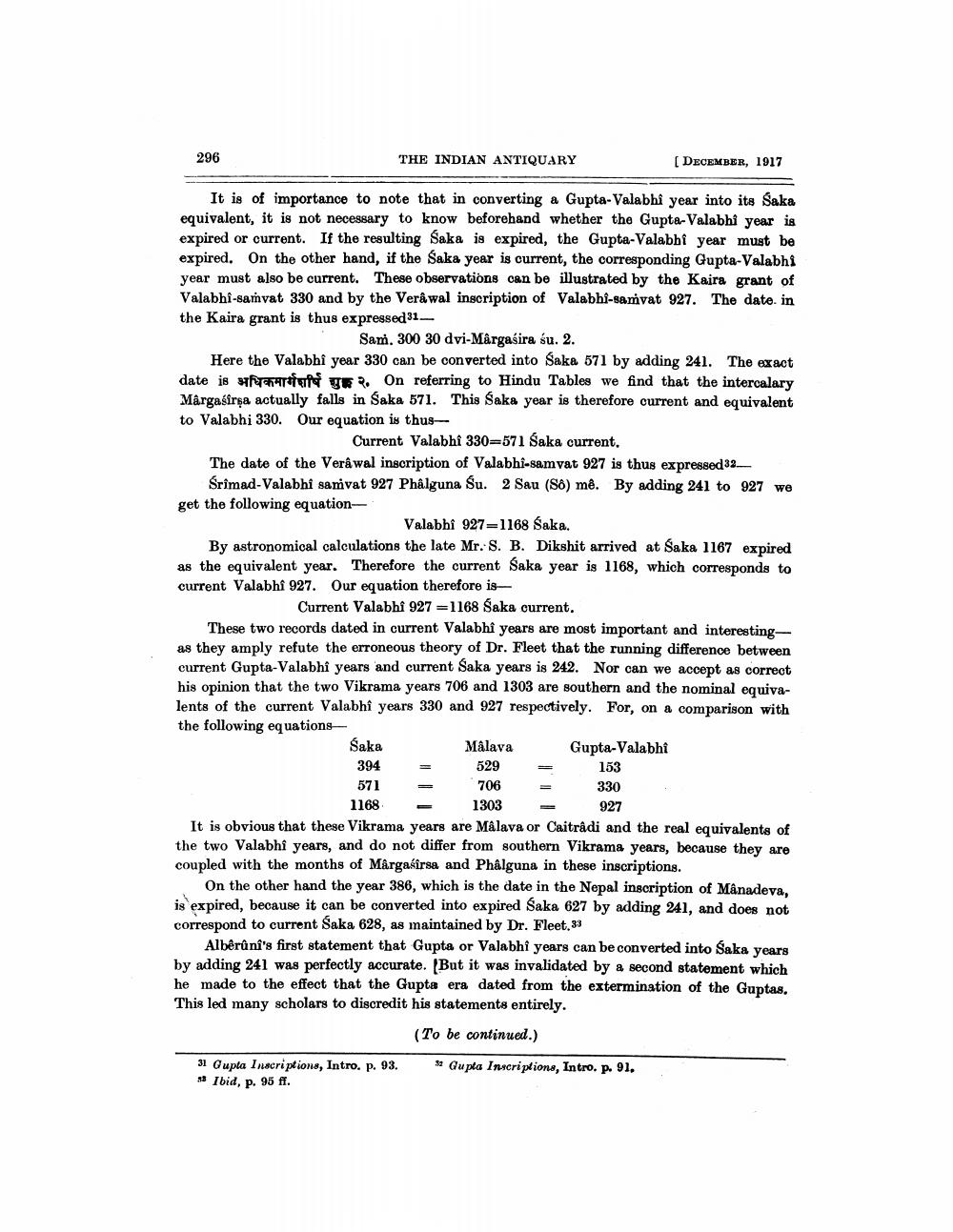________________
296
THE INDIAN ANTIQUARY
[ DECEMBER, 1917
It is of importanoe to note that in converting a Gupta-Valabhî year into its Saka equivalent, it is not necessary to know beforehand whether the Gupta-Valabhi year is expired or current. If the resulting Saka is expired, the Gupta-Valabbi year must be expired. On the other hand, if the Saka year is current, the corresponding Gupta-Valabhi year must also be current. These observations can be illustrated by the Kaira grant of Valabhi-samvat 330 and by the Verâ wal inscription of Valabh-samvat 927. The date. in the Kaira grant is thus expressed 31.
Sam. 300 30 dvi-Mârgasira su. 2. Here the Valabhi year 330 can be converted into Saka 571 by adding 241. The exact date is s hared E. On referring to Hindu Tables we find that the intercalary Mârgasirşa actually falls in Saka 571. This Saka year is therefore current and equivalent to Valabhi 330. Our equation is thus
Current Valabhî 330=571 Saka current. The date of the Verawal inscription of Valabhi-samvat 927 is thus expressed 32...
Srimad-Valabhi samvat 927 Phâlguna Su. 2 Sau (56) mê. By adding 241 to 927 we get the following equation
Valabhi 927=1168 Saka. By astronomical calculations the late Mr. S. B. Dikshit arrived at Saka 1167 expired as the equivalent year. Therefore the current Saka year is 1168, which corresponds to current Valabhi 927. Our equation therefore is—
Current Valabhi 927=1168 Saka current. These two records dated in current Valabhî years are most important and interestingas they amply refute the erroneous theory of Dr. Fleet that the running difference between current Gupta-Valabhî years and current Saka years is 242. Nor can we accept as correct his opinion that the two Vikrama years 706 and 1303 are southern and the nominal equivalents of the current Valabhi years 330 and 927 respectively. For, on a comparison with the following equations
Saka
Mâlava Gupta-Valabhi 394
529 = 153 571 1168 1303
927 It is obvious that these Vikrama years are Mâlava or Caitrådi and the real equivalents of the two Valabhi years, and do not differ from southern Vikrama years, because they are coupled with the months of Mârgakirsa and Phâlguna in these inscriptions.
On the other hand the year 386, which is the date in the Nepal inscription of Månadeva, is expired, because it can be converted into expired Saka 627 by adding 241, and does not correspond to current Saka 628, as maintained by Dr. Fleet. 33
Albêrûni's first statement that Gupta or Valabhî years can be converted into Saka years by adding 241 was perfectly accurate. But it was invalidated by a second statement which he made to the effect that the Gupta era dated from the extermination of the Guptas. This led many scholars to discredit his statements entirely.
(To be continued.)
706
330
31 Gupta Inscriptions, Intro. p. 93. 3 Ibid, p. 95 ff.
Gupta Inscriptions, Intro. p. 91.




